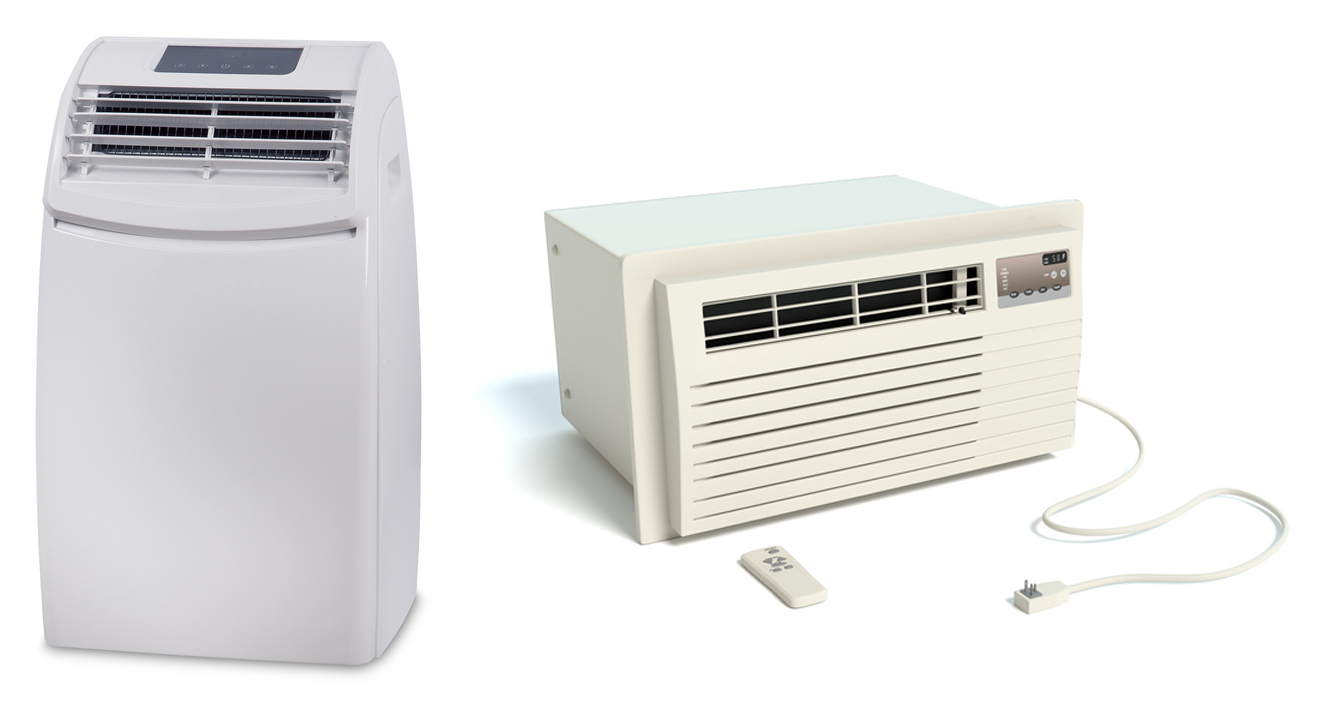What Type of AC Unit is Best for You?

This summer, many PA consumers are trying to keep cool but still have cheap electricity bills. As a result, there’s a lot of buzz over whether portable AC units are better than traditional window units. Portable AC units are becoming more popular as a convenient alternative to larger window AC units. But which one is better for cooling your home to give you the best savings on electricity? Let’s compare the two!
How Do AC Units Work?
First, a fan in AC unit pulls in hot, humid air from your home. It moves this air over refrigerant-chilled coils to cool off. Water in the humid air condenses on these coils and drains off. The now-cooler, dry air is blown back into your home. Meanwhile, the heat absorbed from the air by the refrigerant is shunted into condenser coils to the back part of the machine. There, another fan blows over the condenser coils. This cools the refrigerant and vents the heat. The refrigerant then cycles back through the system again.
This is where the big difference comes in. Window units have their exhaust is located on the back of the unit, facing outside when installed. However, portable AC units come with hoses that vent the heated air outside through a wall, door, ceiling or window.
What to Know When Shopping for an AC Unit
There are two things to keep in mind when you compare AC units.
Firstly, size matters. Look for the number labelled “BTU ASHRAE,” “BTU DOE,” or even just “BTU”. This number describes the cooling output in BTUs (British Thermal Units) of the AC. The size of the space you’re cooling is a major factor in determining how many BTUs of power you need. When choosing the right size AC, you’ll also want to keep things like ceiling height in mind and make adjustments. Check out this BTU calculator to figure out what size AC unit you’ll need.
Secondly is energy efficiency. Most window units have EnergyStar ratings which helps you determine how energy efficient each product is. But, current (2024) versions of portable AC units do not have EnergyStar ratings. Keep this in mind because some stores advertise them so that they appear to. However, the Department of Energy has set standards for them that will go into effect January 10, 2025.
Luckily, both window and portable units come with a yellow Energy Guide tag. So, be sure to use these tags when you compare units as they provide the best energy information.
Comparing Portable and Window AC Units
Let’s say you need to cool a 450 square foot apartment. That would require about 10,000 BTUs of cooling power.
Using the EnergyStar guide, a good choice for a window unit would be the Midea U+. This 10,000 BTU unit costs around $420, and according to the Energy Guide tag, it uses an estimated yearly $52 in electricity. The same brand also has a portable unit with a similar BTU output, the Midea Duo. This unit costs around $500, and uses an estimated yearly $62 in electricity. Both units have similar features, offering noise reduction and app enabled smart controls.
Ultimately, window units are more powerful, energy efficient, and cheaper to buy. But they can be a pain to install. So if you need to regularly move the AC, or cannot place a unit in the window, then a portable unit might just be for you.
Save More on Electricity When You Shop
Hopefully you feel better prepared to shop for an AC unit! But what about shopping for a better energy rate? Pennsylvania’s deregulated energy makes it important to be a smart shopper. If you want to compare companies, read reviews, and find the best energy prices there’s only one place to go. Check out https://www.paenergyratings.com today!

